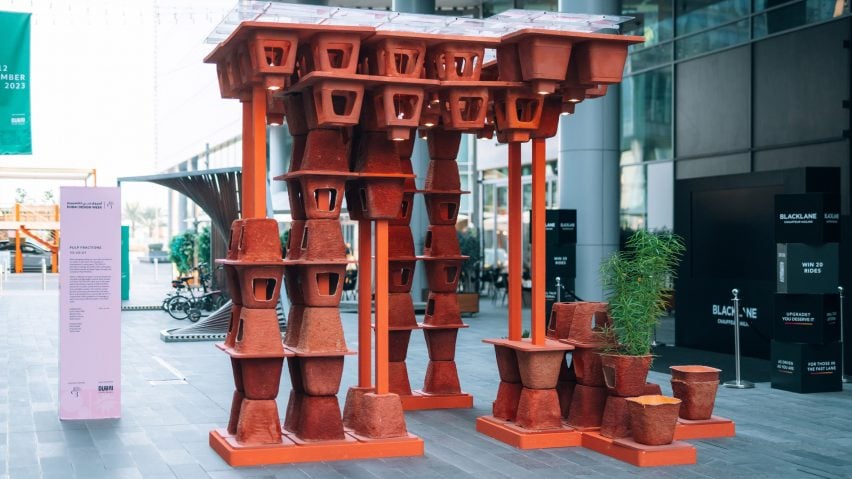
Five innovative biomaterial installations from Dubai Design Week 2023
The latest edition of Dubai Design Week has launched with a series of biomaterial installations, including a teahouse made from food waste and a light installation made from loofahs.
Located in the purpose-bulti Design District in Dubai's desert, the annual design week showcases projects by a cohort of local and international designers.
This year, there was a noticeable trend for the many temporary installations that dot the festival area to be constructed from biomaterials – materials derived from living organisms such as plants, animals and fungi.
These ranged from common ones, including wood and paper, to more experimental materials.
While some were created purely as a piece of decorative design, most were intended to function as an example of how biomaterials can be used to create more sustainable, functional structures.
Read on for a roundup of five installations made from biomaterials at Dubai Design Week 2023:
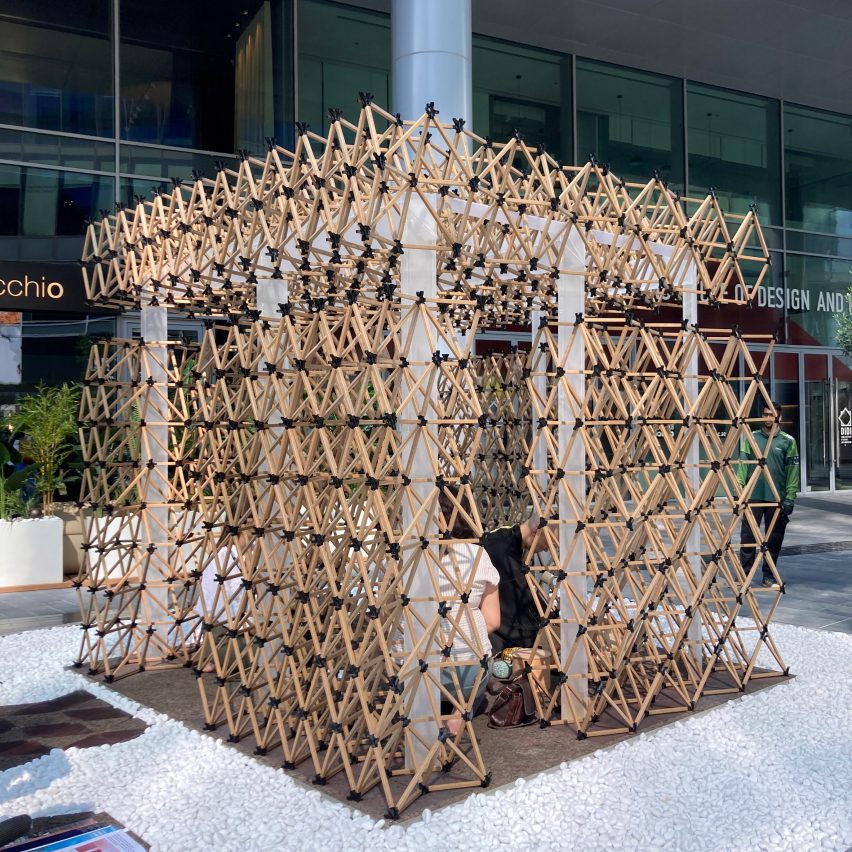
Arabi-An Tea House by Mitsubishi Jisho Design
Designed by Japanese studio Mitsubishi Jisho Design, the Arabi-An Tea House was made using local food waste and aims to bring people together by hosting tea ceremonies in the purpose-built structure.
Constructed out of paper and food waste, the pavilion features joint connectors made from tea and grapes. These organic materials were dried, turned into a powder and then heat-pressed into moulds made in collaboration with a Japanese metal-alloy crafter.
"We collect waste from factories, food they can't sell, and it is ground into powder," co-designer De Yuan Kang told press at the launch of the installation.
"One thing that we want to emphasise is that we have not added any other materials to this, it's just pure food waste."
The pavilion is the latest in a series by Mitsubishi Jisho Design after showcasing a food-waste teahouse in Venice called Veneti-An. The studio aims to eventually use the technique to create larger or more permanent structures.
"This is a very good opportunity because we do it on a smaller scale to test things that can be done on a bigger scale next time," Kang said.
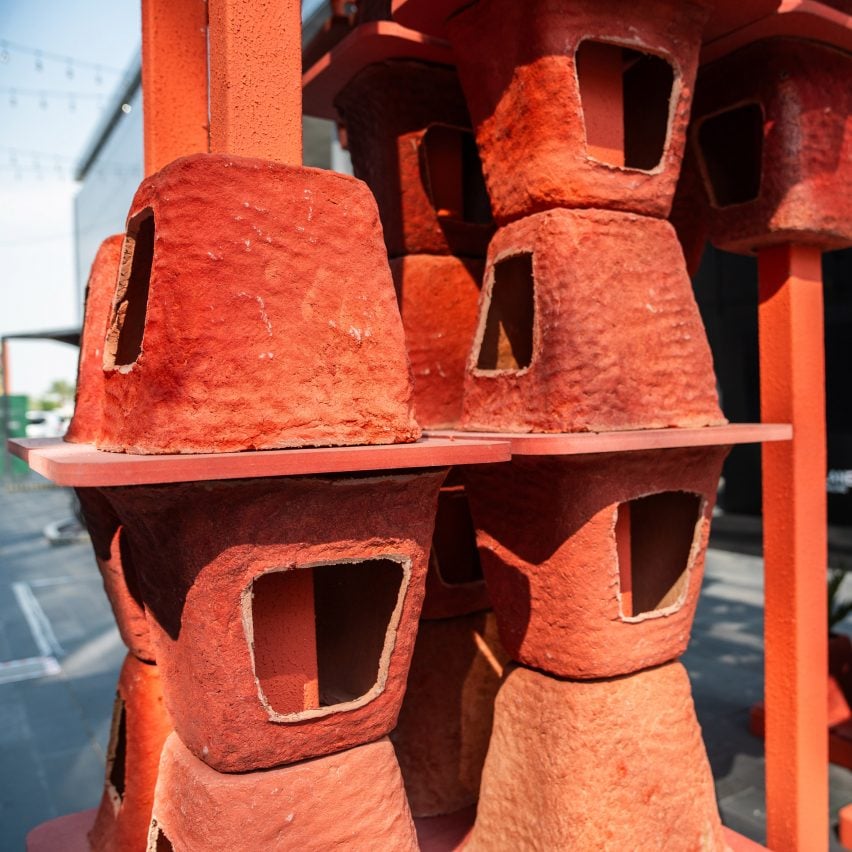
Pulp Fractions by Tee Vee Eff
Plenty of visitors stopped to look at and touch the colourful Pulp Fractions installation by Tee Vee Eff, which is made from discarded paper and cardboard.
The design aims to draw attention to the fact that packaging makes up more than one-third of our waste, according to the studio, which used mainly delivery boxes and paper bags to create the installation.
These waste materials were pressed and dried, turning them into a material that the studio says is both lightweight and durable. This was then shaped into stackable, bright-red modules using a custom mould and finally placed on top of one another to create a playful open pavilion.
"The modules contain grooves, protrusions and extrusions that allow them to be stacked," Tee Vee Eff said. "Thus a new sculptural form is created that is both symbolic in its message as well as functional, offering respite in the public realm."
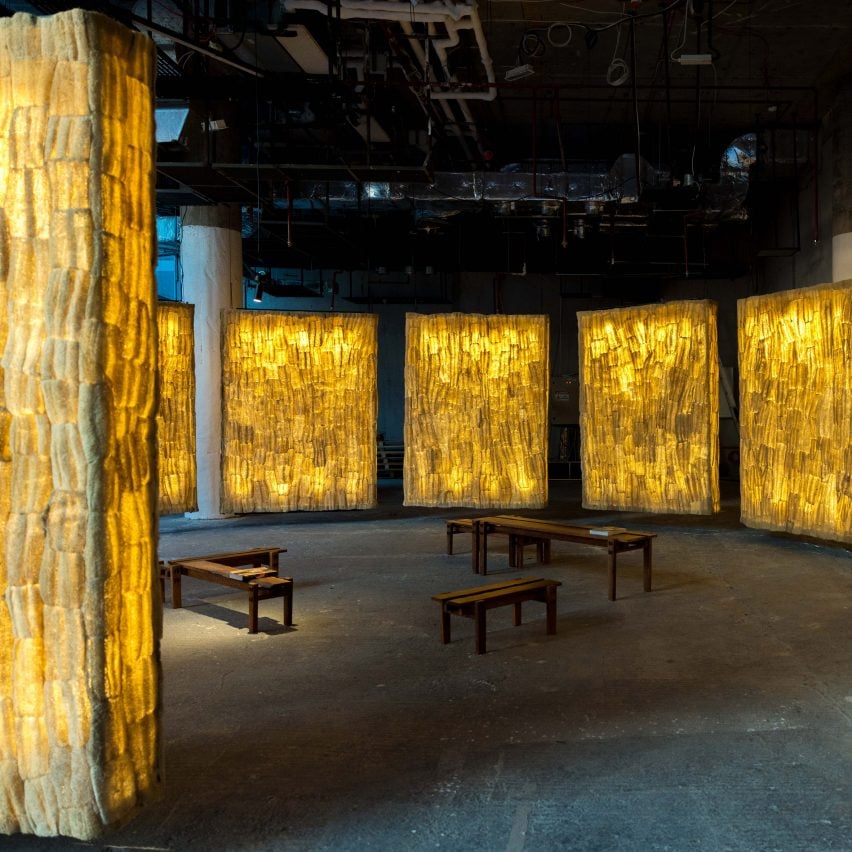
The Future Will Be Sown by Made in Earth Collective
Based in Bangalore and along the Kaveri belt in India, Made in Earth Collective's installation at Dubai Design Week is an example of how everyday organic materials can find new use.
The light installation – the only non-pavilion on this list – is made from dried loofah and gives the common material a decorative feel. The designers sourced the tropical fruit, which can also be dried and turned into a sponge for washing, after it was dried and its seeds removed but before it was composted.
The dried loofahs were sown together, creating large light panels that showcase the rough-hewn texture of the plant. These are complemented by minimalist wooden benches made from coconut wood with a natural decorative pattern.
The collective, which normally works with stone, has recently been branching out into other biomaterials.
"We have been on a journey to explore beyond those minerals and look at materials which can be regenerated, which can be grown, and which can be used to create spaces," engineer Jeremie Gaudin said.
Made in Earth Collective collaborates with local villagers and is currently working in the region of the Deccan Plateau in southern India but hopes to expand the project.
"We've started making connections only in southern India for now, because that's how much we have been able to cover, but the whole of India has incredible potential material that is just waiting to be explored," architect Shruthi Ramakrishna told Dezeen.
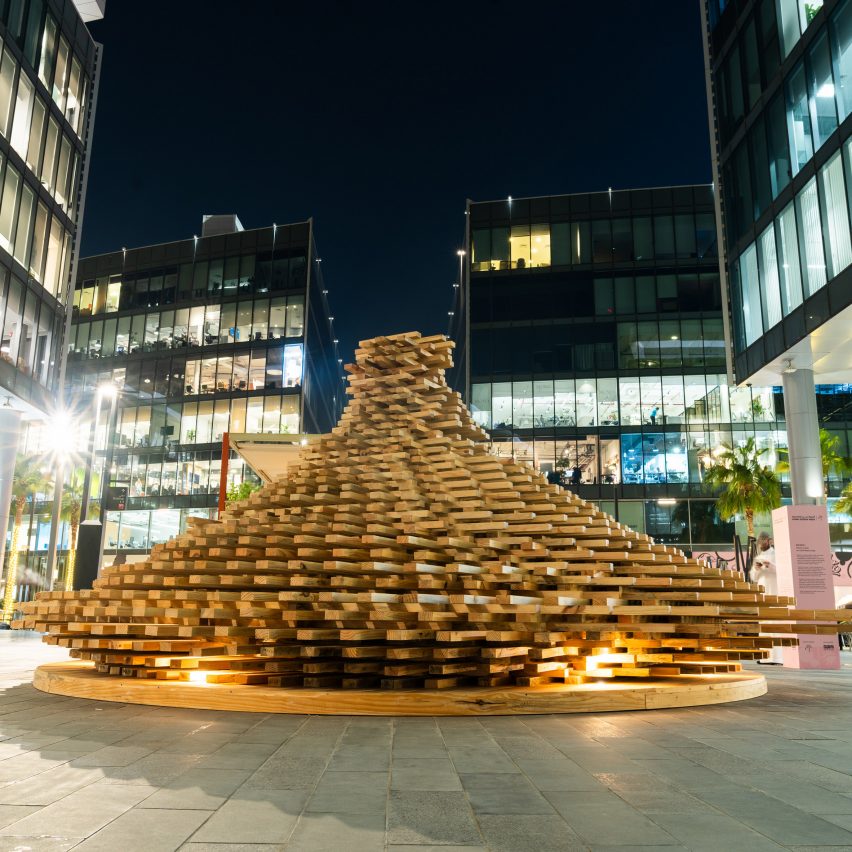
Naseej by AlZaina Lootah and Sahil Rattha Singh
The Naseej pavilion – Arabic for "to weave" – has a ziggurat shape that was informed by Emirati craftsmanship and draws on traditional weaving patterns from the area, as well as the "elegant geometry of palm tree leaves", its designers said.
Created by Emirati designer AlZaina Lootah together with Indian architect Sahil Rattha Singh, the structure is comprised of multiple pieces of reused and recycled wood and was designed as a space for contemplation.
It is dismantlable and reusable to minimise waste.
"Naseej is produced in a manner which, once dismantled, allows all the material to be upcycled for future use, ensuring that the pavilion leaves no trace behind," the designers said.
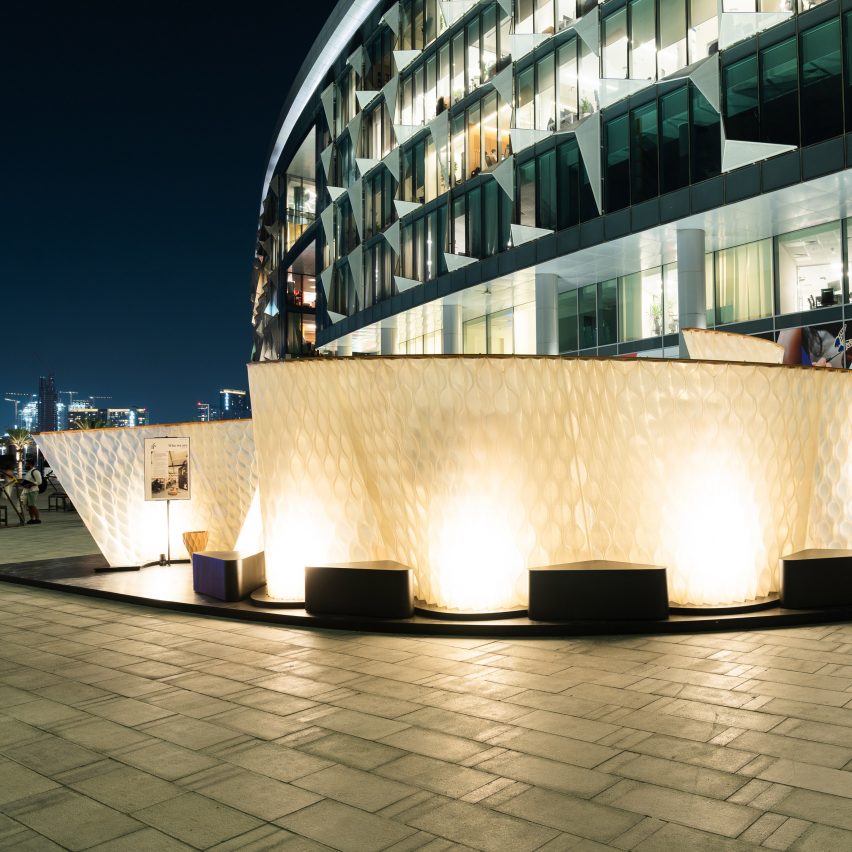
The Altostrata – Therme Pavilion by Arthur Mamou-Mani
London-based designer Arthur Mamou-Mani took his Therme Pavilion, originally designed for the Sibiu International Theatre Festival in the medieval town of Sibiu in Romania, to experience the desert sand at Dubai's Design District.
The pavilion is made from sugar cane that was fermented into lactic acid in order to create polylactic acid (PLA) – a bioplastic that Mamou-Mani 3D-printed into walls for the pavilion.
He aimed to test how the material, which biodegrades when industrially composted, would react to different climates. Mamou-Mani believes it could be the future of plastic, eventually replacing the plastic used for water bottles and other single-use products.
"I first discovered it through 3D printing because it has a low melting temperature, like 200 degrees, but actually, it's a really great material," he told Dezeen.
"If it was used for water bottles, it wouldn't have Bisphenol A," he added. "When you burn it, it's not carcinogenic, and it doesn't leave microplastics in you. So the more I dig into it, the more I see a potential to replace plastic."
The photography is courtesy of Dubai Design Week unless otherwise stated.
Dezeen is a media partner of Dubai Design Week, which takes place from 7 to 12 November. See Dezeen Events Guide for an up-to-date list of architecture and design events taking place around the world.